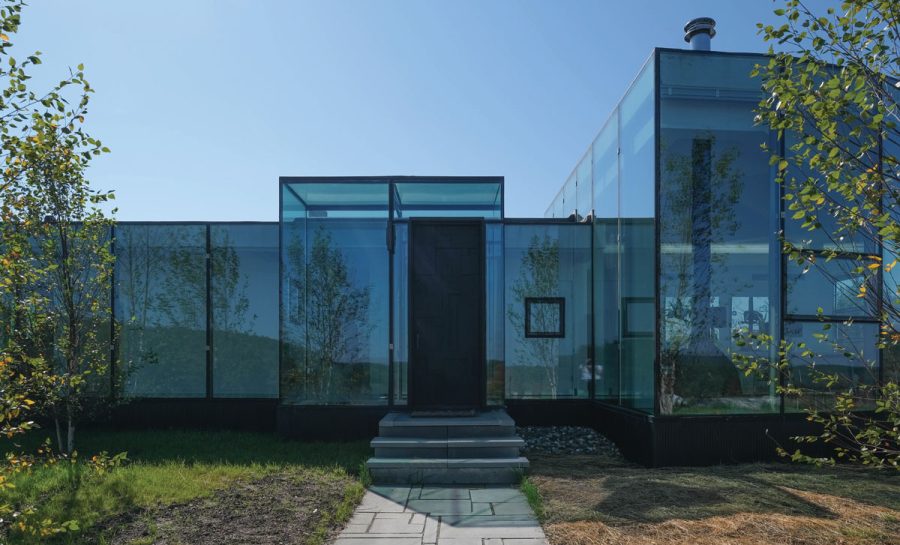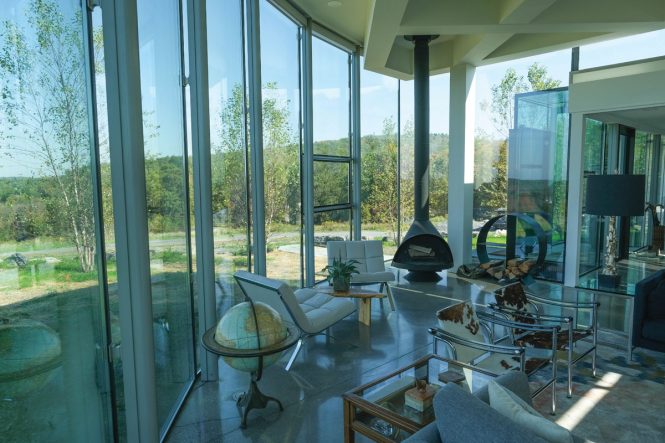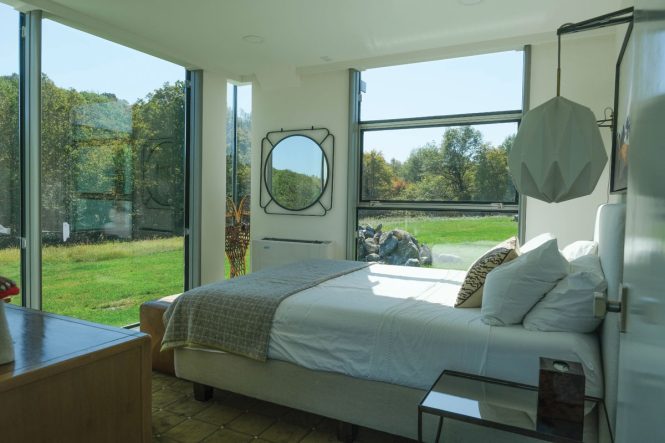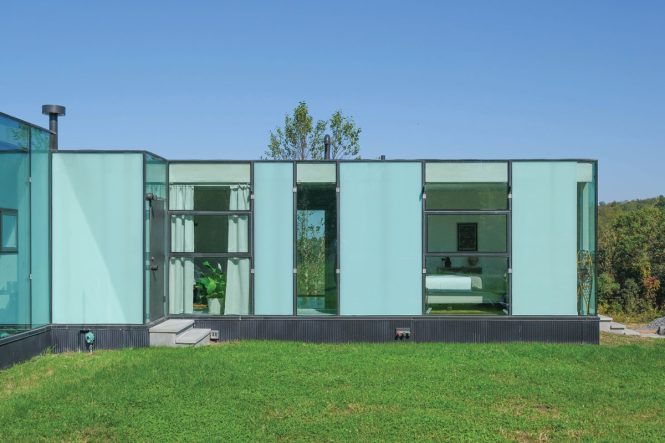VS1 Glass Homes Are a Revolution in Building Technology
Presented by VS1 Home | Fall 2024 | SPONSORED
Almost every aspect of human life benefits from natural light: mood, sleep, productivity, and vitamin D levels just to name a few. The traditional design of homes, punctuated here and there by slivers of window, offers but a little taste of the sunshine that the mind and body needs—and often requires intensive and inefficient uses of natural resources, too. For the past nine years, architectural engineer Franz Safford has been exploring the benefits of living in a home made entirely of glass—a powerful nexus of technology and environmental consideration.
Safford’s VS1 Glass House in Tivoli, the first of its kind, followed almost four decades of his work to entirely reconceptualize the conventional building envelope. Inspired by the Philip Johnson Glass House and I. M. Pei’s Louvre Pyramid, Safford spent 28 years developing a solution that responded to the modern architectural and environmental needs of buildings at an achievable cost.

Safford’s second VS1 house has made glass-based, residential construction a plug-and-play possibility.
In 2006, he invented VS1, an innovative curtain wall system that utilizes blade-shaped mullion and cast aluminum fittings to support the use of insulating, laminated, and monolithic panes of glass as the primary material for a building’s envelope. Safford founded architectural services company Innovation Glass to bring the concept and its standard parts kit to boundary-pushing buildings across the globe.
Since its introduction, VS1 has revolutionized the look and feel of dozens of large-scale commercial projects, as seen in the Central Bank of Ireland’s Dublin flagship building and the United Airlines terminal at LAX. High-profile New York projects include the feature facade at the new Resorts World Casino in Queens, and the glass walls of the new Statue of Liberty museum on Liberty Island.
 In 2013, Safford purchased a property near Tivoli and began work to bring VS1 to the residential market. His own 4,200-square-foot home and Innovation Glass’s headquarters would be the model.
In 2013, Safford purchased a property near Tivoli and began work to bring VS1 to the residential market. His own 4,200-square-foot home and Innovation Glass’s headquarters would be the model.
Living in the home, Safford says, has been glorious—especially when the weather’s intense. “There was one heavy rainstorm that was so dramatic that it looked like I was inside a waterfall,” he recalls. “I grabbed my camera to film and suddenly the waterfall disappeared and was replaced by all this green. A tree had snapped and landed on the roof. All it did was make a little thud—no crash, no cracks.”
The sense of immersion in nature, he says, is unimaginable. “When it thaws and then freezes, you get these icicles on the glass that make incredible light patterns when the sun hits,” he says. “When it snows and drifts, you’re inside the drift and completely toasty warm.”

The house’s primary source of heat is the passive energy of the sun coupled with radiant heat in all floors, while solar panels generate additional electricity. A smart home app controls the home’s shades and window coverings, and regulates the heating and cooling system in 12 different zones by responding to a rooftop weather station’s cues with automatic adjustments.
With the recent completion of the second VS1 house (dubbed “VS2”) located in the Catskills, Safford has officially made glass-based residential construction a plug-and-play possibility. “We needed certainty before we promoted this concept,” says Safford. “Now, we can do a kit, which can be assembled easily by anyone who knows building construction. It’s in the spirit of the IKEA concept, only all made in the USA and engineered for your climate conditions, and costs are about the same as stick-built. Or we can do a custom house that will be beyond your wildest dreams.”
